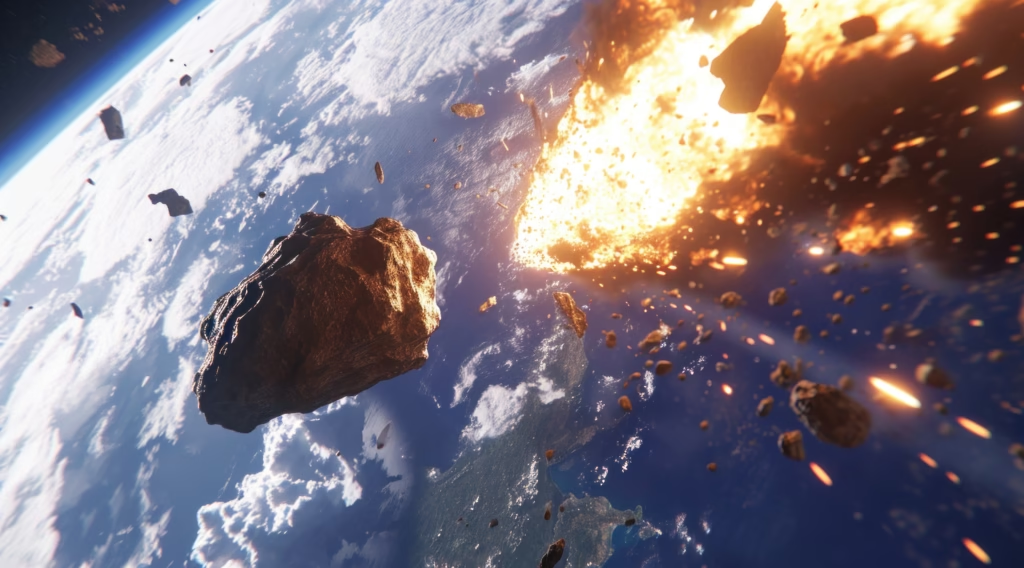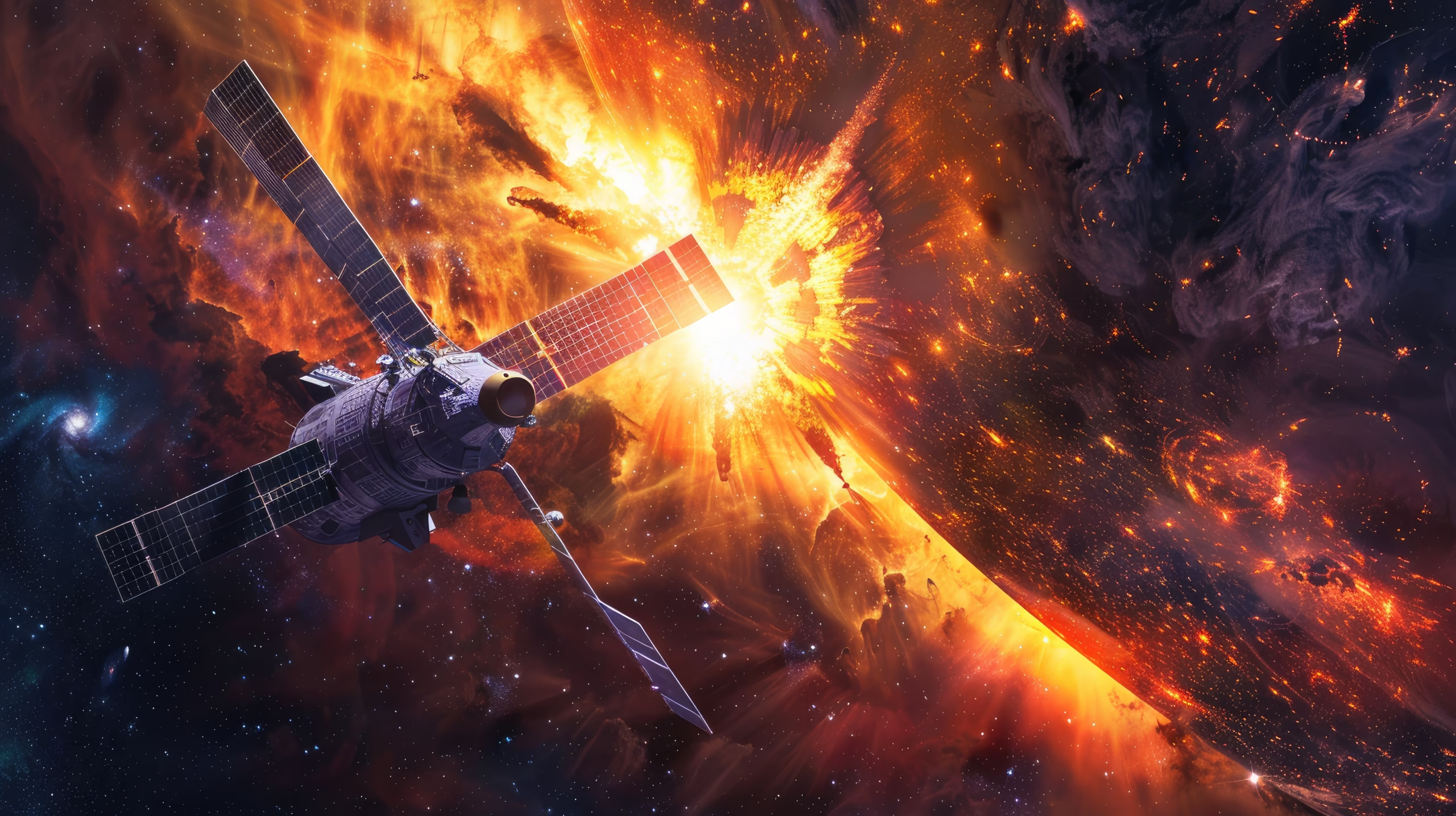Space technology has transformed life on Earth. It powers our communication systems, monitors climate change, and helps scientists explore the farthest reaches of the universe. Satellites are critical for internet connectivity, GPS navigation, and global broadcasting. Astronaut technology has enabled humans to live and work in space, pushing the boundaries of exploration. Advanced spaceship technology is paving the way for missions to Mars and beyond.
However, as we launch more satellites and spacecraft, we also leave behind debris. Although, This growing cloud of space debris threatens the very systems we rely on. Without action, space and technology could face unprecedented challenges in the coming decades.
What is Space Debris and Why is It a Threat to Space Technology?
Space debris, also known as orbital debris, consists of non-functional satellites, spent rocket stages, and fragments from collisions in space. These objects may be as small as a paint chip or as large as an old satellite. Despite their size, they travel at speeds of up to 28,000 kilometers per hour.
When even a tiny piece of debris collides with satellite space technology, the damage can be catastrophic. For example, a fleck of paint could puncture a satellite’s solar panel, disrupting power generation. A larger piece might completely destroy an operational satellite or endanger astronauts aboard a spaceship. Space debris is not just a theoretical issue—it’s a growing danger to modern space and technology systems.
The Increasing Space Debris Issue in Earth’s Orbit
Earth’s orbit is becoming increasingly cluttered. Over 34,000 pieces of debris larger than 10 cm are currently tracked. Millions of smaller fragments remain untracked but still pose significant risks. With every satellite launch, the chances of collisions grow.
This issue became more severe after incidents like the 2009 collision between an active communications satellite and a defunct Russian satellite. The impact created thousands of fragments that now endanger other satellite and space technology. Scientists warn that if this trend continues, Earth’s orbit could become so crowded that launching new spacecraft or satellites would be too dangerous.
How Space Debris Impacts the Functionality of Space Technology
Space debris significantly affects satellites, which are vital for Earth’s daily operations. Satellites allow for emergency services, weather forecasting, and worldwide internet access. A single piece of debris can disable these systems, causing widespread disruption.

The International Space Station (ISS) also faces constant threats. Astronaut technology, such as space suits and shielding, is designed to protect against impacts, but it has limits. In 2021, a piece of debris narrowly missed the ISS, forcing astronauts to take shelter. Even spaceship technology, built for interplanetary travel, cannot withstand a high-speed collision with orbital debris.
If left unchecked, space debris could render large parts of Earth’s orbit unusable, putting all space technology at risk.
Space Technology at Risk: Real-Life Incidents Caused by Space Debris
Real-life incidents highlight the danger of space debris. In 2007, China destroyed one of its weather satellites during a missile test, generating over 3,000 pieces of debris. This debris now threatens other satellites and space missions.
In 2013, a small fragment hit a Russian satellite, causing it to malfunction. However, Such collisions are becoming more frequent as the amount of debris increases. Even advanced spaceship technology, like SpaceX’s Crew Dragon, must frequently alter its course to avoid potential impacts.
These incidents underline the urgent need for global cooperation to manage and reduce space debris.
The Role of Space Technology in Monitoring and Managing Space Debris
Space technology plays a crucial role in tracking and managing debris. Advanced radar systems and telescopes monitor Earth’s orbit, tracking thousands of objects. Although, Satellite and space technology use this data to adjust their paths, avoiding collisions.
Programs like NASA’s Orbital Debris Program and Europe’s Space Surveillance and Tracking (SST) initiative work tirelessly to reduce risks. They develop strategies to safely deorbit defunct satellites and create technology satellite systems capable of withstanding impacts. However, These efforts are vital for maintaining the safety of space and technology systems.
Innovative Solutions to Combat Space Debris
Scientists and engineers are exploring innovative solutions to tackle space debris. One idea involves using robotic arms or nets to capture and remove debris. Another involves developing satellite space systems with self-destruct mechanisms, allowing them to safely deorbit after their mission ends.
Laser-based technology is also being tested to push small fragments out of orbit. These technologies represent the future of space technologies and sustainability. However, implementing them on a large scale requires global cooperation and investment.
International Policies and Space Technology Collaboration to Address Space Debris
Solving the space debris problem requires international collaboration. Policies like the United Nations’ Guidelines for Long-term Sustainability of Outer Space Activities encourage responsible behavior in space. Space agencies and private companies must work together to ensure safe satellite space operations.
Additionally, agreements on shared technology satellite solutions could lead to better debris management. Collaboration is the only way to protect space technology from future threats.
Future of Space Technology Amid Increasing Space Debris Challenges
Despite the challenges, the future of space technology remains promising. Engineers are designing smarter satellites that can avoid debris. Although, Spacecraft are being built with enhanced shielding to withstand small impacts.
However, to fully realize the potential of spaceship technology and advanced satellites, we must address the debris problem. Sustainable practices and innovative technologies will ensure space remains accessible for future generations.
How Can We Protect Space Technology from the Dangers of Space Debris?
Protecting space technology requires immediate action. Launching fewer, more efficient satellites can reduce congestion. Recycling or repurposing old satellite space systems could prevent debris buildup.
Governments, space agencies, and private companies must invest in cleanup missions. Developing advanced astronaut technology and spacecraft capable of handling debris is also essential. By taking these steps, we can ensure the continued growth of space and technology systems.
The Way Forward
Space technology has revolutionized life on Earth, but it faces serious challenges from space debris. Without action, the systems we rely on for communication, exploration, and research may be at risk.
By investing in sustainable practices, innovative solutions, and global cooperation, we can protect our satellites, spaceships, and astronaut technology. The future of space technologie depends on how we address the debris crisis today. Let’s act now to ensure a safer and cleaner orbit for future generations.

